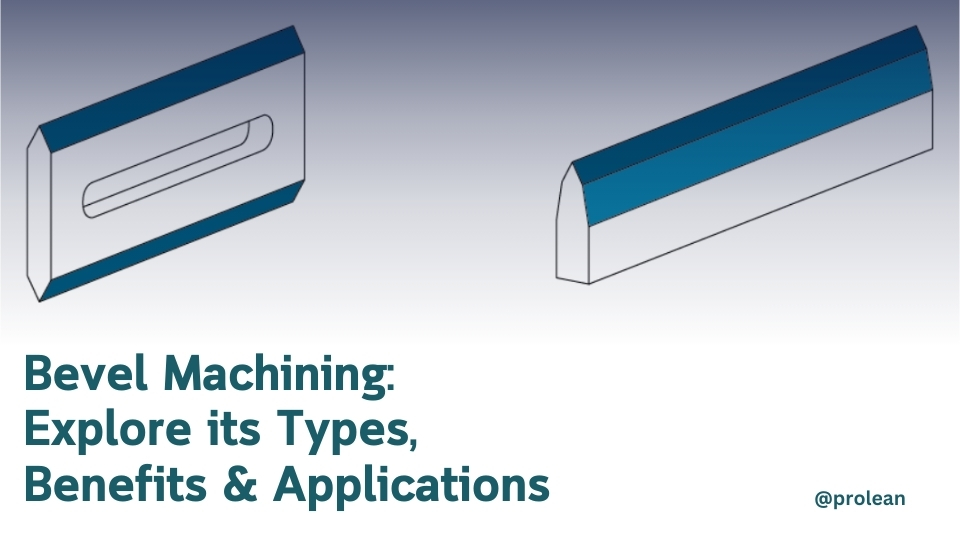
Bevel machining is an advanced machining process of goods, especially in the preparation of the corners of mechanical parts. This process also helps in easy assembly and at the same time improves performance. In this article, we’ll explore the beveling process, answering the question: What is a bevel? We shall also look at the various bevel cuts that are there and how they can be effectively used.
What is a Beveling (a Bevel)?
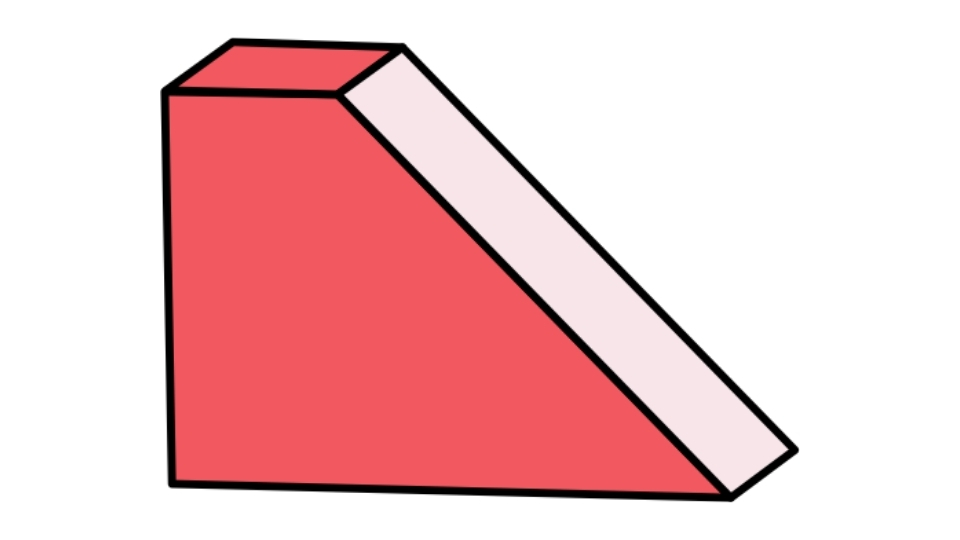
Bevel Cut
Let’s begin with the primary question: What is Beveling? In other words, beveling is a manufacturing process by which the edge of a workpiece is formed to a required angle or profile. This prepared edge referred to as a bevel is intended to fit precisely against another component and as such is an important feature in design for manufacturing analysis.
Try Prolean Now!
Benefits of Bevels in Mechanical Design
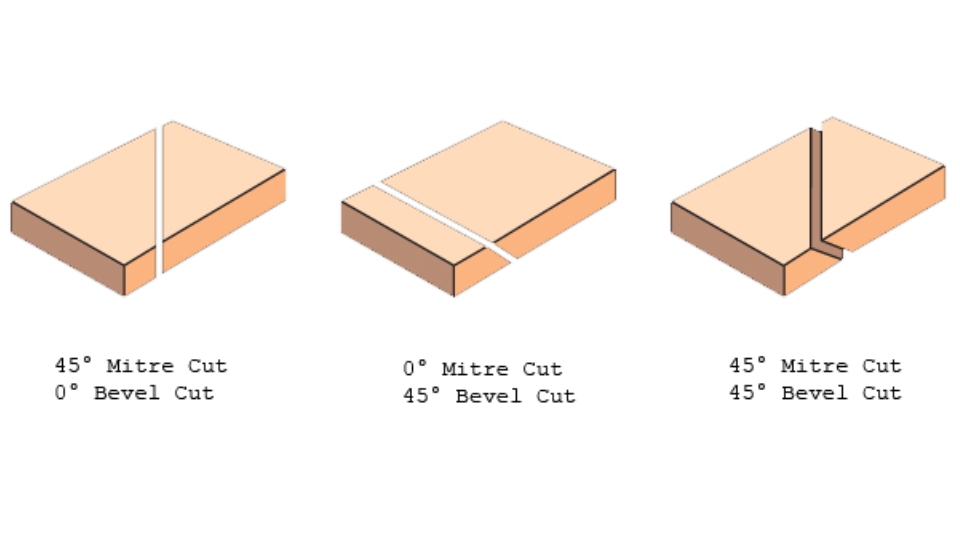
Beveling angles
Now that we have a clear picture of what beveling is all about, we are in a position to look at the advantages it has in mechanical design. Bevel machining is a fundamental feature in engineering, and here are some key advantages:
Simplified Assembly
In complex assemblies, it is vital that parts fit well together, and beveling allows this to happen. Machinists normally achieve complex joints by putting a chamfer on the mating surfaces of the workpieces to ease the joining process. If the right bevel is not used then such joints cannot be assembled easily or in some cases at all.
Enhanced Welding Quality
Edge preparation is a very vital process in welding and beveling is one of the most essential steps to it. The appropriate geometry of the bevels enables deeper penetration of the weld through the thickness of the plate and gives the welder sufficient room to add material filler. Besides, a good bevel facilitates efficient transfer of heat and heat dissipation thereby improving the strength and uniformity of the weld.
Increased Safety
The advantage of beveling is the security it offers to any project. The edges of products may be sharp and this is dangerous and may lead to some harm being inflicted. When designing such products, beveled edges can be used to get rid of such sharp corners which are dangerous to handle and use. This safety feature is generally implemented in products such as metal enclosures and automotive rims.
Improved Stress Distribution
Since stress is usually focused on sharp edges, they are usually susceptible to wear, cracking, and chipping. Sharp corners are detrimental because they present small areas through which stresses can be distributed, even with low force. Beveling gets to this problem by developing a geometry that uniformly spreads stress so that there is little or no chance of failure.
Aesthetic Appeal
Therefore, in addition to the functional advantages of bevel machining, beveling can have aesthetic value to a product. For example, a car panel with rounded edges looks much more aesthetical than the one with cut edges. Likewise, rounded edges of the smartphone are not only more secure and comfortable in the hand but also look better.
Types of Bevels
Bevel cuts are of different types and can be made in different sizes depending on the needs of the project. Let’s examine some of the most common types:
V Bevel (Plain Bevel)
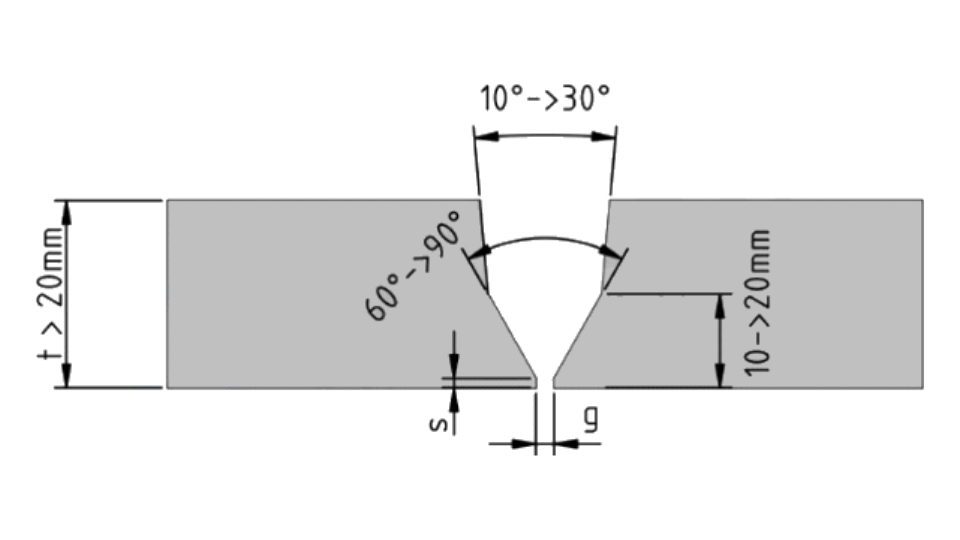
V beveling
Plain bevels are of the simplest kind and are referred to as V bevels. It is an inclined plane that is of uniform angle and uniform breadth. The V bevel is used in engineering, especially welding, to offer the right depth for penetration of the welder. Moreover, it’s also employed for safety and aesthetic reasons.
J Bevel
The J bevel is named for the shape that it has, which is in the shape of the letter ‘J’. This bevel has a composite form with straight and curved facets, which makes it suitable for use in various demanding situations. The J bevel is convenient when it comes to butt welding, and it consists of a straight part that serves as a reference plane and a round part that can be inserted into the weld zone.
Compound Bevel
A compound bevel is one in which, on a single edge, there are two or more bevels, each with a different angle and thickness. Due to this complex geometry, it is one of the most versatile bevel types that are used in carpentry and joinery, metalworking, and pipe fitting industries. Compound bevels are not used in basic welding but may be used where the edge requires different weld strength in different areas.
Knife Edge Bevel
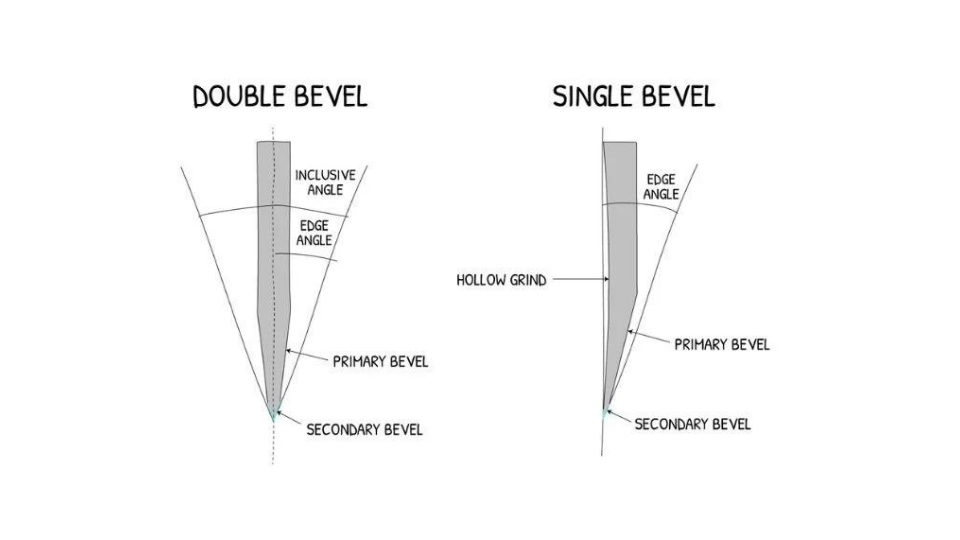
Knife edge bevel
The knife-edge bevel is intended to produce a thin, sharp cutting edge, and is most suitable for products such as knives, surgical instruments, chisels, and other products that demand fine cutting. This type of bevel is important in applications in which a sharp edge is required for the best performance.
Radiused Bevel
The radiused bevel comes in a rounded bullnose edge and is most commonly applied in safety applications such as automotive panels and metal frames. Also, the rounded edge assists in minimizing stress concentration hence reducing the chances of chipping and other related damages.
Comparing Bevels, Fillets, and Chamfer: Major Differences
Some of the edge treatments that are available in the market are Bevels, fillets, and chamfers which are used on different projects. Although they are somewhat similar, each has its purpose that sets it apart from the other with certain features. It will be valuable to consider how they are unique.
What is a Bevel?
Bevel means an angle or a slop that is made by cutting or shaping the corner to the specified angle. Usually, the bevel divides the angle of the meeting faces, and it may divide it in half, but it can be different. These include the use of bevels as fillets, to break sharp corners, ease assembly, enable better welding penetration and access as well as enhance the looks of a part.
Understanding Fillets

Fillet
Fillet is defined as the rounded or smooth junction of two surfaces which may be convex or concave in nature. This curve is often of constant radius, thus ensuring continuity between the two adjacent surfaces. Fillets are used in a design to minimize stress concentrations, add strength, and for aesthetic enhancement of a product. The removal of sharp corners is done by fillets hence reducing the external brittleness and the stresses are spread in internal corners more evenly. Fillets are used in all kinds of products such as welded joints, machined parts, moldings, furniture edges, and so on.
What is a Chamfer?
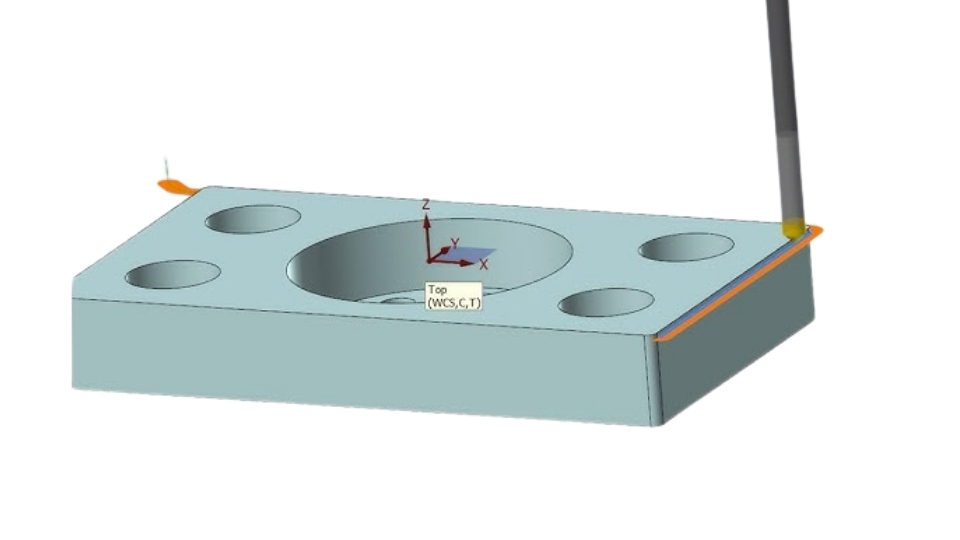
Chamfer milling
A chamfer is a type of rounded edge or a face that is mostly formed by the cutting of an angle at an edge or the corner, in this case, the angle is usually at forty-five degrees. This straight cut is used where it is necessary to eliminate sharp edges, to ease assembly, to create an aesthetic appearance, or finally, to shield easily damaged or exposed corners. Chamfers are found on furniture edges, machined parts, architectures, and even bolt heads. If you want more information about edge treatment, then read our article on fillet and chamfer.
Try Prolean Now!
Technical Differences Between Chamfer and Bevel in CNC Machining
The following table compares and contrasts chamfering and beveling in terms of the edge features, corner, surface finish, machining process, cost and time, finishing after machining, and stress.
Table: Bevel vs. Chamfer Cuts.
| Aspect | Chamfer | Bevel |
| Edge Profile | Flat surface with a consistent, straight angle, typically at 45° | Sloped or curved edge, often with variable angles less than 45° |
| Corner Treatment | Maintains a defined corner while removing sharpness | Softens or rounds the corner, potentially reducing or eliminating it. |
| Appearance | Straight edges meeting at a sharp angle, creating a squared-off look | Smooth, rounded transition providing a curved appearance |
| Machining Method | Achieved with simple, high-speed tools and straightforward techniques | May involve multiple tools or manual adjustments to achieve desired curvature |
| Cost and Time | Generally lower due to simpler and faster machining processes | Higher due to complexity and potentially longer machining time |
| Post-Machining Finishing | Easier to finish and coat due to flat, consistent surfaces | More challenging to finish and coat due to complex curves and transitions |
| Stress Distribution | Potential for minor stress concentration at the corner | Curved edges help distribute stress more evenly, reducing the risk of failure |
Beveling Tools and Equipment
The bevel machining process is similar in some way to other machining processes but it demands different tools and equipment to be used.
Manual Beveling Tools
This is normally the case in many workshops whereby machinists use hand tools like files and the portable grinder to produce bevels. These tools are more skill and experience-intensive in creating the bevels, especially of the smaller to medium project sizes. However, manual tools are generally restricted to basic beveling patterns only as opposed to the complex ones that are achievable with automated tools. It is difficult to achieve fine beveling profiles and thus, these tools are not so useful for larger and more complex jobs.
Power Tools for Beveling
There are more advanced power tools such as angle grinders and routers that are even more effective than manual methods. These tools are fairly accurate, fast, and versatile when it comes to beveling various materials of work. This is because power tools are effective and can be used in a variety of ways making them a common feature in machine shops.
In the case of using power tools, it is much easier to achieve consistency in a variety of bevel geometries which are almost impossible to achieve manually.
Flame Cutting for Beveling
Flame cutting is common when it comes to beveling especially when dealing with pipes or thinner materials. This process involves utilizing a flame torch to melt the material to a point where it becomes easy to cut and pull it out from the main workpiece while leaving a beveled edge.
Flame cutting is a good method for the given applications but it has certain drawbacks as well. For example, it is not very effective with thick sections, and more often, further finishing operations are needed to remove splash and excess solidified metal.
CNC Machines for Beveling
If the requirement of precision and complexity is high, then CNC machining can be an optimal process, used in beveling. These machines are very precise and are capable of cutting even very complicated bevel angles because of the multi-axis operation.
CNC machines can create small bevels with the least amount of post-processing needed. The edges are refined and there is no sharpness of edges and corners and heat-affected zones are also minimized. (Learn more on our blog: CNC machining tolerance.
Specialized Beveling Machines
In organizations with workshops that mostly carry out beveling operations, purchasing beveling machines is always a great call. These machines are mainly used for beveling and are capable of working with many different geometries such as plates, pipes, and angle irons.
These specialized machines may employ custom milling cutters and this makes it possible to create special bevels which may not be achievable with the regular equipment. They come with the precision of CNC machines but with the flexibility that is required in various beveling operations.
Techniques of Estimating the Beveled Edges
The beveled edges must be measured, especially when working with geometries such as the angles or slopes. Below are some of the approaches that are normally used to determine bevels:
Using a Coordinate Measuring Machine (CMM)
A CMM is an elaborate tool used for the specific goal of ascertaining the position of an item in space. When you put the part on the CMM you can place multiple points on it and can determine the different angles and the size of the part. This method is particularly beneficial when precision is necessary because, with this method, one can readily determine the degree of a bevel.
Utilizing a Bevel Protractor
A bevel protractor is therefore a type of tool that is used in measuring angles on beveled surfaces which are in most cases slanted. When using it, one places the protractor on the bevel of the angle and reads the angle from the scale part. This tool is mainly used in workshops and also in construction sites where there is a need to take quick and accurate measurements of an angle.
Using a Digital Angle Gauge
A digital angle gauge may be defined as an electrical measuring tool that can directly display the degree of the inclination plane of a certain face. It is very easy to use as is shown by the digital display that provides correct and fast results. This tool is very handy when one cannot see or access the angles being measured for any reason.
Applying a Triangle Ruler
The other procedure of doing it is by using the triangle ruler. When the ruler is placed on the beveled edge, one can decide on the degree to which the bevel is horizontal or vertical. This method is very rudimentary and is best suited to simple bevels though one may find it useful in situations where better equipment is unavailable.
Calculating with Trigonometric Functions
If one is comfortable with mathematics, then the dimensions of the bevel are measured and with the help of trigonometric value, the angle is determined. This way, you can use formulas to determine the exact angle depending on the height and length of the bevel. This method is particularly useful where there are what are referred to as custom or non-standard angles when other tools are inadequate. A laser distance meter can also be used to find the height and the length of a bevel as well. It is therefore possible to come up with the angle of the inclined surface once these measurements have been obtained. This method is most helpful for application in extensive areas or areas that may be hard to cover with other implements.
Experts’ Opinion on How to Achieve the Best Bevels
This seems to be an easy process to do but there are some factors that one must consider to get the best results when beveling. Here are some tips to be followed for getting accurate and efficient beveling:
Maintain Uniform Geometry
To get a consistent bevel several factors have to be regulated, such as the angle of the bevel and the shape of the surface of the bevel. When making a bevel face must be parallel to the angle that has been set. Repeatability is important to ensure that the bevel does what it is intended to do particularly in low-tolerance environments.
Avoid Pre-Heating the Material
Although it is much simpler to penetrate through a workpiece after pre-heating, it is not advisable when beveling. Bevels are normally produced to be welded where there is the need to have continuity of material throughout the weld. Some of the effects of pre-heating include; Pre-heating alters the nature of the weld and the quality of the joint due to changes in the properties of the material that is to be welded.
Prepare the Edge Properly
It is important to understand that in beveling the edges should be cleaned appropriately before the beveling starts. Make sure that the beveled surface is free from rust, dirt, or other such things which can be a reason for inconsistency in the bevel or can put too much pressure on the tools. It is very vital to grind the edge of the blade before beginning the beveling process to produce a good bevel.
Utilize Coolants When Necessary
Beveling also gives out heat and this is particularly so when cutting hard materials such as steel or titanium. To avoid issues such as overheating and high friction, the correct lubricant or coolant must be used. These substances ensure that the workpiece is at the right temperature and also enhance the life span of your cutting tools hence leading to clean and efficient beveling.
Applicability of Bevel Machining in Engineering Context
Bevels are used as a feature of a large number of engineering applications as both a structural and design element in many fields. Here are some of the primary uses of bevels in engineering:
Weld Preparation
Beveling is widely used in edge preparation for welding being one of the most common applications of the technique. By having an edge that is beveled, the quality of the weld that is created is boosted greatly. By beveling, it is easier for the weld to penetrate and have a stronger joint, and also the welded assembly is made stronger.
Pipe and Tube Beveling
Pipe and tube joining requires beveling for a good joining to be made. Well-finished edges facilitate the right fit as pipes or tubes are fitted together and this is very critical in ensuring that leakages are well addressed in different piping systems.
Cutting Tools
In the field of cutting tools, beveling has a significant function of leveling edges to meet certain geometric standards. Such edge geometry is important for its performance in cutting different materials including metals and composites.
Industry Applications
Bevels are commonly used in aerospace as well as automotive applications. For instance, most airplane parts have edges that are tapered to increase the efficiency of air movement, which in turn increases fuel efficiency thus better performance.
Architecture and Home Decoration
Another important application of beveling is observed in architectural and ornamental fields. Beveled edges also apply to furniture and tiles, countertops, fixtures, etc., which makes them more attractive and safe. Beveled edges are more rounded and smoother in comparison with other types of edges which makes them safer and more aesthetically pleasing.
Try Prolean Now!
Conclusion
Swept or beveling or bevel machining is a very useful and general process in the engineering field used to improve the performance, safety, and appearance of products in different applications. No matter whether it is for enhancing functionality or for the beauty of the object, bevels are a common feature in today’s manufacturing world.
Prolean Tech is particularly adept at giving tailored CNC machining service, such as precision beveling. Their experience in the enhancement of the bevel geometry and in providing adequate machining solutions guarantees quality for various engineering applications.

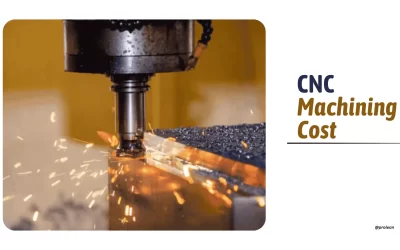
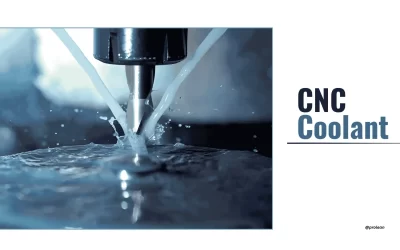
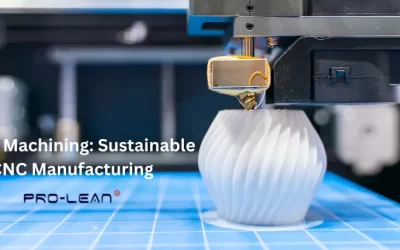
How does a J bevel compare with a V bevel for welding applications?
The J bevel offers better weld penetration and a smoother transition, reducing the risk of cracking in high-stress joints compared to the V bevel, which is simpler but may require more filler material for deep welds.
Hello, Robin. A J bevel offers a rounded edge, reducing filler material and improving weld strength and ideal for thicker metals. On the other hand, a V bevel is simpler to prepare and suits thinner materials but needs more fille.